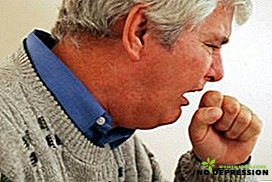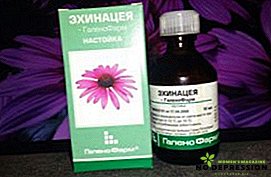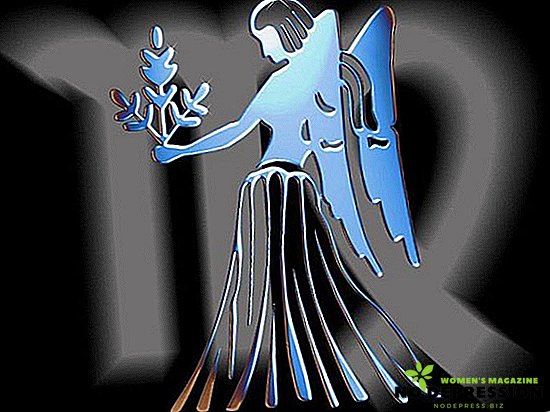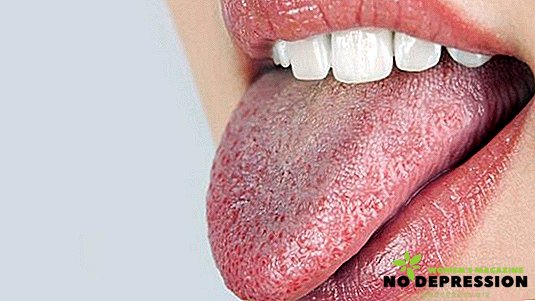Inflammation of the lymph nodes - cervical lymphadenitis. Rarely occurs independently, most often due to other diseases. It is very important to be able to identify the symptoms in order to immediately consult a doctor, since such a pathology can lead to serious complications. Each stage of treatment must be agreed with the doctor.

Classification of lymph nodes in the neck and head
Lymph nodes are divided into groups such as (depending on their location):
- Facial or zygomatic. Rarely inflamed, lymph from them enters the chin or parotid nodes.
- Parotids that are divided into deep or superficial.
- BTE.
- The chin.
- Lingual lymph nodes.
- Submandibular.
- Anterior neck - superficial and deep.
- Lateral, which can also be deep and superficial.
- Supraclavicular.
The occipital and the ear lymph nodes are responsible for filtering lymph, which "flows" from the occipital and auricles. To the parotid lymph comes from the temple, external auditory passages, from the areas of the eyelids. Chin accepts lymph from the teeth, soft tissues of the face, lips. Lingual lymph nodes are collected from the tongue.
Depending on which of the nodes involved in the process of inflammation, you can find a focus. For example, if they are enlarged around the neck, this can tell not only about the presence of an infection or oncology, but also about problems in the abdominal cavity.

Why they can be increased
There are many causes of inflammation of the lymph nodes.
Diseases of ENT organs, for example:
- rhinitis;
- otitis;
- angina;
- caries, stomatitis, periodontitis;
- oral diseases;
- flux;
- glossitis;
- gingivitis;
- Nome's disease.
Diseases of the neck organs:
- laryngitis and tracheitis;
- inflammatory diseases of the thyroid gland;
- infections of the scalp or neck, which include the appearance of boils, abscesses, hematomas.
Also the causes may be systemic infectious diseases:
 brucellosis;
brucellosis;- tuberculosis;
- measles;
- HIV infection;
- mononucleosis;
- rubella;
- parotitis
An overall decrease in immunity can also lead to an increase in lymph nodes.
Symptomatology
Symptoms of this disease are:
- General intoxication, in which there is an increase in body temperature, weakness, irritability, headache.
- Local inflammation. In this case, the lymph nodes increase, there is pain when pressing, pain when turning the head and neck, the skin turns red at the site of inflammation.
In each case, the symptoms will be different. For example, in the case of a dental infection and ear inflammation, in addition to an increase in the lymph nodes, a toothache may appear, but in case of angina there is pain when swallowing. Most often, if one of the nodes is enlarged on the left or right side, it means that the inflammation center is located on this side.
With pain, symptoms of general intoxication, you should definitely consult a doctor - he will conduct a survey, examine the patient and be able to determine the exact location of the inflamed node.
How is the diagnosis
Diagnosis begins initially with a survey of the patient, examination of enlarged lymph nodes, search for the source of infection. The doctor should examine the skin on the head, face, neck for the presence of boils, infected injuries. There should also be an inspection of the mouth, pharynx, palpation of all nodes in the neck and head.
And to make the most accurate comparison, you need to palpate the nodes from both sides.
The doctor will also examine the skin for a rash, as these symptoms may indicate smallpox or chickenpox.
Also diagnostics includes:
- Complete blood count (advanced leukocyte formula). During inflammation, the level of leukocytes will be increased, and in case of infectious mononucleosis, monocytes will be detected in the blood. If the number of leukocytes is reduced, but an increase in lymphocytes is observed, immature forms of cells are found in the blood, this may indicate leukemia, lymphomas.
- X-ray of the chest. It is also a mandatory item of the study, especially in the case when there are signs of general intoxication. This may indicate tuberculosis or the presence of intrathoracic lymph nodes.
- Ultrasound of the nodes is prescribed for sarcoidosis or purulent inflammation. They may also prescribe an abdominal ultrasound scan.
- CT scan, MRI. These diagnostic measures are prescribed for diseases of the thyroid gland, with the defeat of deeply located nodes.
- Sowing on microflora, which is taken in the presence of an infectious process in the pharynx and oral cavity.

Treatment of inflammation of the lymph nodes
The tactics and treatment regimen largely depends on the age of the patient, his condition, test results, the type of infection that led to inflammation. It is very important to follow all the recommendations of the attending physician, as well as to seek specialized help on time, since the inflammation of the nodes is always an alarming sign.
Most often, treatment is carried out using conservative methods (with no risk of spreading infection). In addition, during the period of therapy it is necessary to comply with bed rest, you should not be long in the street, especially with strong wind or heat, try to engage in physical activity. Most likely, antibiotics or anti-inflammatory drugs will be prescribed - it all depends on the infection or microorganism that caused the inflammatory process.
During the period of treatment, it is necessary to observe the regimen of the day, minimize stresses, and loads, since all this can aggravate the patient's situation.
It is also worth remembering about the correct diet - with the increase in lymph nodes, you need to exclude from your diet the following foods:
- spices and seasonings;
- salty or spicy foods;
- various marinades;
- alcoholic beverages;
- fried food;
- tough food.
A patient with such a diagnosis needs a high-calorie diet, but at the same time, the food consumed must be gentle to the sore throat. Try to stop smoking during this period, as you need to spare your throat as much as possible. And all drinks should be warm and nutritious, enriched with vitamins.
During this period, soups, porridges, herbal decoctions, vegetable or fruit purees are shown. From meat dishes suitable chicken or veal, and it is desirable to cook it for a couple and without the addition of spices. If the disease has developed against the background of a viral infection, care should be taken to strengthen the immune system, for which the doctor will prescribe a multivitamin complexes or immunostimulating agents (remember that you can only drink them after a thorough consultation with a specialist).

If we are talking about a purulent form of the disease, it is necessary to carry out an autopsy of the lesions, after which they are drained and prescribed a course of antibacterial therapy. Treatment must be carried out under the supervision of specialists in the hospital. In some cases, physiotherapeutic procedures may be prescribed to help relieve puffiness, pain, and remove compaction.
However, such procedures can be prescribed and can only be performed by an experienced specialist.
Traditional medicine to help
The most famous methods of traditional medicine include:
- Onion Tortilla Take the unpeeled onion head, send it to the oven for 5 minutes - it should soften. Remove the husk, grind to a state of gruel, add there a tablespoon of tar. Put on the clean cloth the resulting mass and apply the cake to the inflamed area for 20 minutes every 3-4 hours.
 Echinacea alcohol tincture, which must be diluted with water in a ratio of one to two. Moisten in the resulting liquid clean bandage, apply overnight. After a couple of days, the inflammation will begin to decrease.
Echinacea alcohol tincture, which must be diluted with water in a ratio of one to two. Moisten in the resulting liquid clean bandage, apply overnight. After a couple of days, the inflammation will begin to decrease.- Infusions of herbs. To prepare the broth, mix 3 tablespoons of wormwood, two tablespoons of oregano, St. John's wort, lungwort and knotweed, 1 spoonful of flaxseed and thyme. All fill with water and take a few tablespoons 2-3 times a day.
- It will help relieve inflammation and improve the immunity of the infusion of blueberries. Preparing it is very simple: chop fresh berries, fill them with raw water. Consume 1 cup daily.
What is forbidden with such a diagnosis
Cervical lymphadenitis cannot be treated on its own, having noticed the first signs of this disease, an urgent need to visit a doctor who will assess the condition, identify the cause of the infection, prescribe the correct treatment.
There is one important point that many people forget about - in no way case you can warm a sore spot, because at the same time the pathogens will quickly spread with blood and lymph to neighboring organs and can even reach the brain, which faces serious complications.
In addition, this effect increases the possibility of the growth of malignant tumors, since an increase in lymph nodes may indicate the presence of cancer cells in the body.
If you do not seek medical help in time, acute inflammation can turn into a chronic form, with the result that lymphoid tissues begin to scar, replace with connective tissues, which as a result makes their functioning impossible.
There are several important rules for the prevention of this disease: it is necessary to timely treat infectious diseases, strengthen the immune system.


 brucellosis;
brucellosis; Echinacea alcohol tincture, which must be diluted with water in a ratio of one to two. Moisten in the resulting liquid clean bandage, apply overnight. After a couple of days, the inflammation will begin to decrease.
Echinacea alcohol tincture, which must be diluted with water in a ratio of one to two. Moisten in the resulting liquid clean bandage, apply overnight. After a couple of days, the inflammation will begin to decrease.









